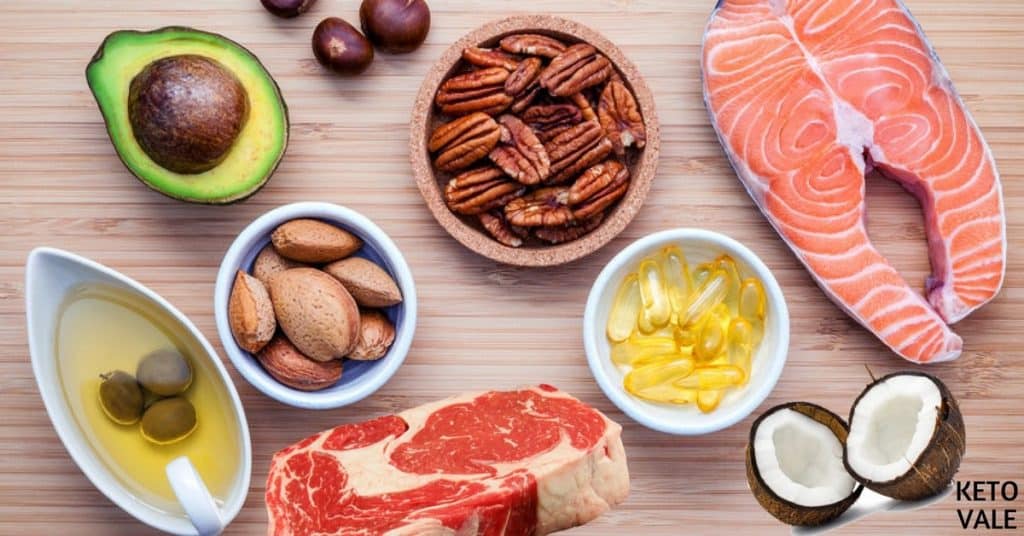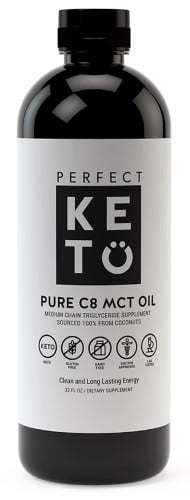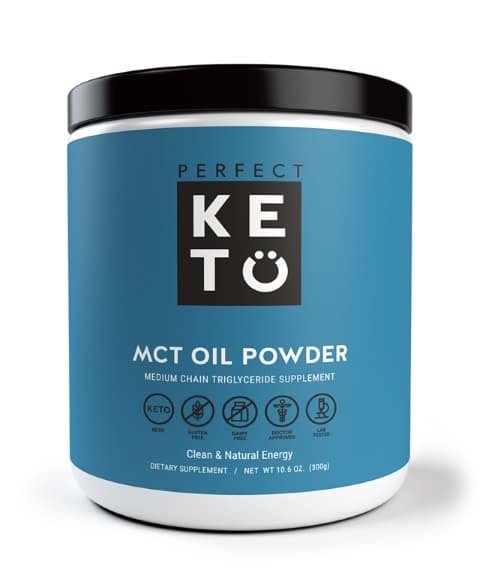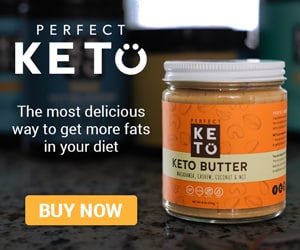Following a ketogenic diet doesn’t mean that you need to be gulping down fat by the spoonful. However, depending on the amount of fat you were consuming prior to starting, you will likely need to increase your intake to meet your calorie needs and to make the diet sustainable and easy to follow.
The quality of the fats that you’re eating is extremely important. You need to reduce the use of highly processed, inflammatory fats (such as trans fats), and instead concentrate on their healthy alternatives.
Which fats should you choose? The list below will help you figure out how to eat more fats on a keto diet.
Things to consider when choosing fats and oils:
- Smoke point – fats with a low smoke point (such as, for example, olive oil) should be used mostly for salads; for cooking and baking, it’s best to use fats that have a higher smoke point (such as coconut oil)
- Nutritional profile (especially omega 3 to omega 6 ratio and the specific fatty acids that they contain)
- How to store them and for how long they can be stored without going rancid
Below you’ll find our selection of the best fats for keto.
Keto Fats Food List
Avocado Oil
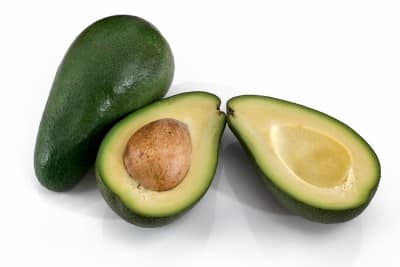
Avocado oil is one of the best oils that you can eat, regardless what diet you follow. It is similar to olive oil in regards to its fatty acids profile. However, avocado oil is more heat-stable, which makes it a good choice when cooking.
Avocado oil is rich in oleic acid (a monounsaturated omega-9 fatty acid), which is beneficial for the heart and the cardiovascular system. It reduces the levels of triglycerides and LDL (the “bad”) cholesterol, while increasing HDL (the “good”) cholesterol, thus improving your blood lipid profile (1). Moreover, it has antioxidant properties and might help combat arthritis (2).
Tips: You can use it for salads, cooking, or even to make your own homemade mayonnaise. Avocado fruit itself is also the best healthy fat you can eat on keto, too.
Olive Oil
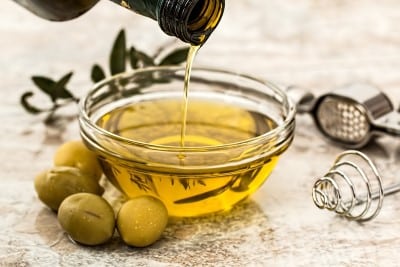
Olive oil comes in a few versions – extra virgin, virgin, and refined. Extra virgin will carry the most flavor and is the least refined of the three. However, it is relatively unstable, so buying local is a good idea.
Extra virgin olive oil has long been known as one of the healthiest fats out there, due to its high monounsaturated fat content (78%), and the amount of antioxidants it contains.
It has been used for centuries by people in the Mediterranean and has been linked to prevention of heart disease in these populations. So if you’d like to use products that have survived the test of time, extra virgin olive oil is a good bet (3).
Tip: It is delicious on salads and can be used for light sautéeing. It’s not advisable to use it for frying or for baking, as it has a relatively low smoke point.
Coconut Oil
Ah, coconut oil!
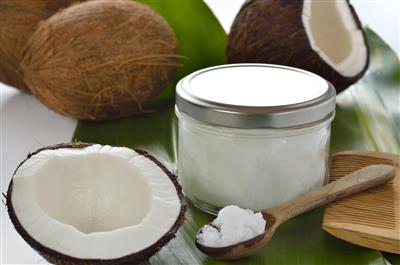
It is highly controversial – many people swear by it, and many avoid it, ironically always for the same reason – the fact that it is high in saturated fats.
In short, as research from the past years suggests, you don’t actually need to fear saturated fat, and especially not the type of saturated fat contained in coconut oil – medium-chain fatty acids.
Moreover, it has been linked to increasing HDL (the “good”) cholesterol and reducing waist size in patients suffering from heart disease. Doesn’t sound so scary, after all (4).
You can use coconut oil for cooking, baking, or even apply it on your skin as a moisturizer. Virgin coconut oil should smell like coconut, while the refined one will usually have no scent. If you have a choice, opt for virgin. It is hard at room temperature but melts easily when heated.
Tips: Excellent for cooking and baking.
MCT Oil
MCT oil, or medium chain triglycerides, is a type of fat that your body uses instantly instead of storing it (provided you’re in ketosis). Many people in the keto community swear by it, as it will give you an energy boost and aid ketone production.
MCT oil is found naturally in coconut oil and in animal fats, although the percentage of MCT in these is relatively low. Coconut oil has around 55%-62% MCTs, while MCT oil contains 100% MCTs, making it much more effective at raising ketones than coconut oil.
The pure form of MCTs, isolated version, is getting more and more popular, though, and it can be found either in a liquid form (MCT oil) or a powder form (MCT powder).
There are 4 types of MCTs: C6, C8, C10, and C12. However, caprylic acid (C8) is the most desirable type when it comes to weight loss, hunger control, cognitive function, and energy (5, 6, 7).
The amount of MCTs in coconut oil is mostly lauric acid (C12). It has smaller amounts of caproic acid (C6), caprylic acid (C8) and capric acid (C10). Therefore, when choosing the best oil for ketosis and health benefits in general, MCT oil is the real deal, and try to choose products that contain mostly C8 if you can.
You can use MCT oil in many keto recipes, such as drinks including coffee and smoothie. For example, we made our Bulletproof Coffee and Keto Oatmeal using MCT oil.
Tips: For some people, it might cause an upset stomach. So when you first try it, only ingest a small amount to see whether you’re not too sensitive to it. You can use MCT oil as a creamer for your coffee, add it to your smoothies, or drizzle it on your food. If you experience digestive issues with MCT oil, try using MCT powder instead. It’s much easier on your digestion.
When it comes to choosing the best MCT products or knowing where to buy MCT oil, it can be overwhelming at first because some products are not reputable and might have low-quality MCTs.
The products that we recommend (and are also loved by our community!) are Perfect Keto. Their products are pure and 100% derived from coconuts. It’s designed for rapid absorption for high-octane physical and mental performance.
You can choose either the liquid form or powder form and check the best price below:
Ghee
Ghee is also known as clarified butter. It is made from butter that has been heated up and filtered to remove the trace milk proteins and sugars from it. For people with a sensitivity to dairy (either to lactose or to casein), ghee can be an excellent alternative to butter.
Tips: Ghee has a higher smoking point than butter and can, therefore, be used for high-temperature cooking. It has a taste that some people find particular, but that you can easily get used to.
Butter
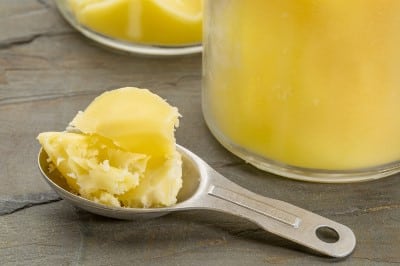
Butter is another excellent choice for keto. People who have problems with dairy sometimes avoid butter (and choose ghee instead, where any remaining milk proteins have been removed). Apart from that, if you’re not particularly sensitive to dairy and to butter in particular, there is no reason to avoid it.
When buying butter, opt for grass-fed. It contains a better nutritional profile and an equal omega 3 to omega 6 ratio (omega 6 is much higher in grain-fed butter).
Nutritional highlights: Butter is a good source of vitamin A and carotene, and grass-fed butter contains vitamin K2, which is essential for the absorption of vitamin D. Moreover, butter contains naturally occurring CLA (conjugated linoleic acid), promoting heart health and faster fat loss in people who are overweight (8)(9).
Tips: You can use butter for cooking or baking. When cooking with it, you should be careful not to burn it (i.e. not to leave it to heat up too much after melting before putting the other ingredients in the pan).
Lard
Lard, i.e. pig fat, is a very good source of vitamin D. So if you have some leftover bacon grease, don’t throw it away. Keep it for the next time you cook. There is no reason to fear lard, as the link between saturated fats and elevated LDL (the “bad”) cholesterol has been disproven many times (10). Different types of lard are available – they come from different parts of the animal and have varying amounts of flavor.
Tips: You can use lard in the same way as butter. It should store it in the fridge to prevent it from going rancid.
Macadamia Nut Oil
Given how fatty the macadamia nut is, making oil from it doesn’t need a lengthy and complicated extraction process. It is very low in omega-6 fatty acids, which is excellent news if you’re trying to improve the omega-3 to omega-6 ratio in your diet. It also means that macadamia nut oil has a long shelf life and a low oxidation rate.
Tips: It is relatively heat-stable, so you can use it for light cooking. It has a light, slightly nutty taste, which goes well with salads, too.
You can also try Perfect Keto Nut Butter. It’s a delicious way to get more tasty fats into your diet.
Cocoa Butter
Cocoa butter is mostly composed of saturated acids and around 30% monounsaturated fats with a low polyunsaturated fat content. It doesn’t negatively affect LDL cholesterol but is mostly used in cosmetics, so finding it in its pure form for a good price might be challenging.
Polyphenols contained in cocoa butter will have a positive effect on your immune system and heart health (11).
Tips: It will have a cocoa taste and aroma, so it’s excellent for desserts, just like other nut butters.
Fatty Fish, Meat and Other High Fat Foods
The list above contains the most common fat sources you can eat on keto. Other high-fat foods you can eat can be found from egg, dairy products, and nuts.
Obviously, you might already consume fat (tallow) from fatty fish, such as salmon, and meats, such as beef, pork, chicken, duck, lamb, and more. The best options are naturally-raised, organic and grass-fed meat. It’s okay to choose regular meats if you have a small budget.
What To Avoid:
Avoid polyunsaturated fats and trans fats from bad vegetable and seed oils, such as canola, sunflower, soybean, and corn oil.
Also, avoid fast foods, processed foods, and commercially baked goods.
How Much Fat Should You Eat on the Keto Diet?
How many grams of fat per day should you eat on a keto diet? The short answer is that it depends on many factors, such as your goal, activities, and the purpose of keto (weight loss, managing medical conditions, and more). You can check this guide to learn more!
To keep it simple, if you follow keto for weight loss and general health, use this Keto Macros Calculator to find out how much fat you need to eat, along with other macros, such as protein and carbs.
Conclusion
Fat is an important part of the ketogenic diet. After all, it’s your primary source of fuel! Keeping your dietary fat intake up is the best way to ensure you’re staying in fat-burning mode.
You’ll want to make sure you get your fats from healthy sources, such as grass-fed meats, organic dairy, and healthy oils. Stick with ghee, olive oil, or butter to cook your cooks in and reserve coconut and avocado oils for salads and smoothies.
Your dietary fat intake will depend on your goals and metabolic rate. However, most people need to eat around 20 grams or fewer per day or around 5% of their total calorie intake to stay in ketosis.
If you’re new to the keto diet, don’t forget to check our free keto meal plans and food list.
